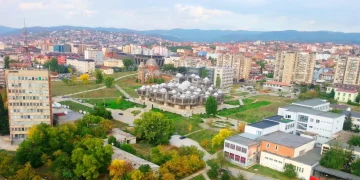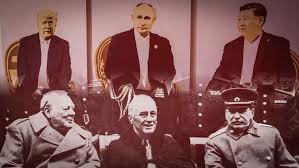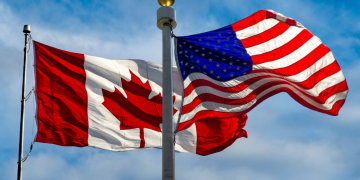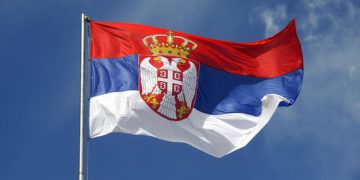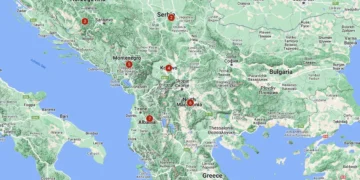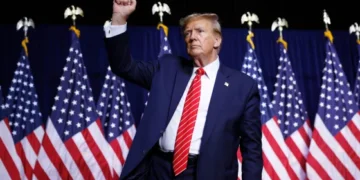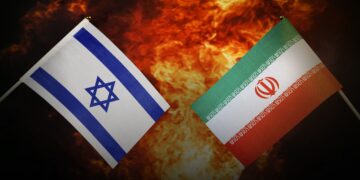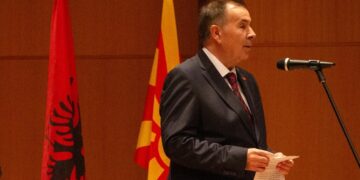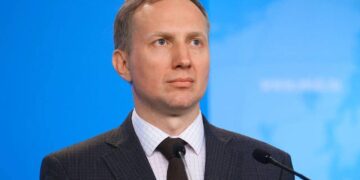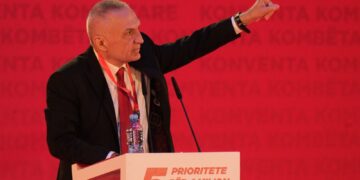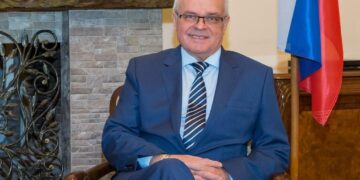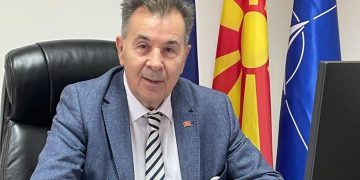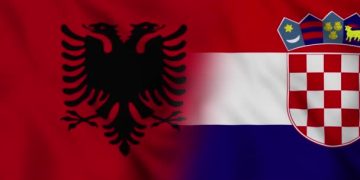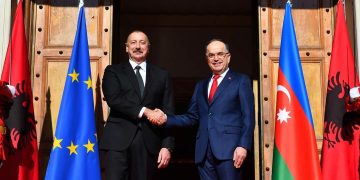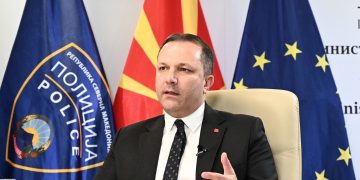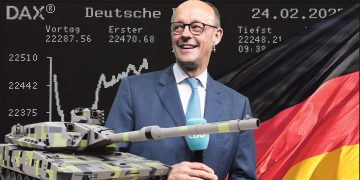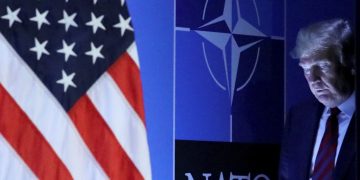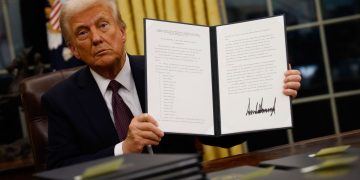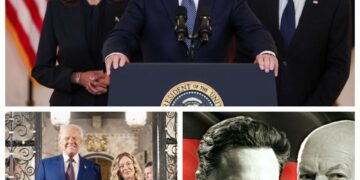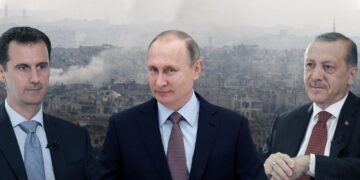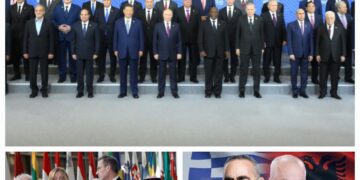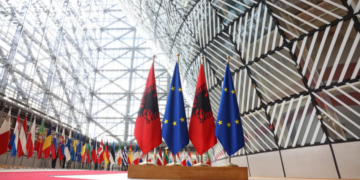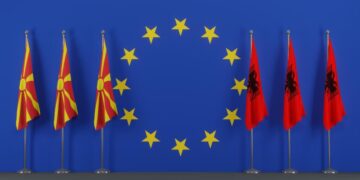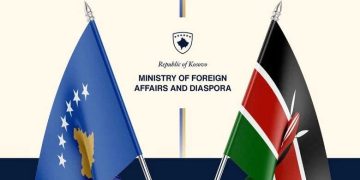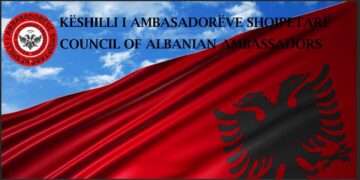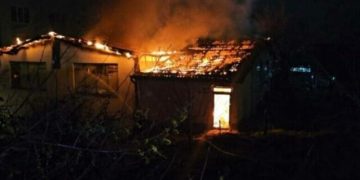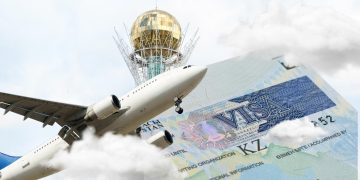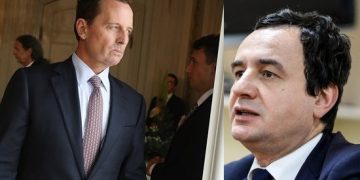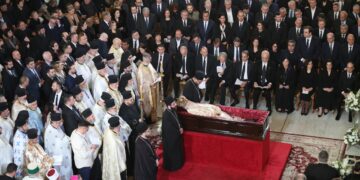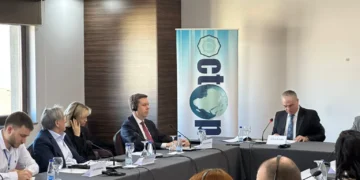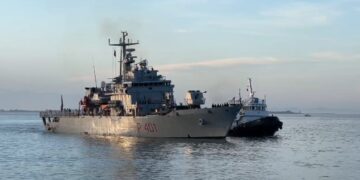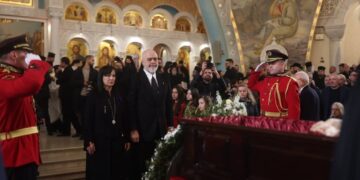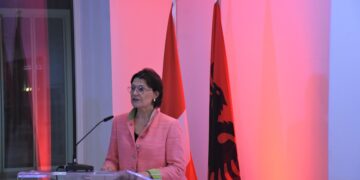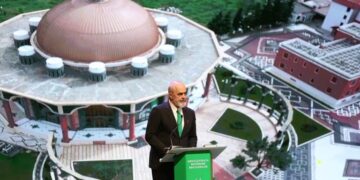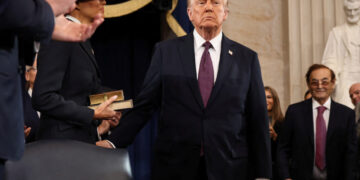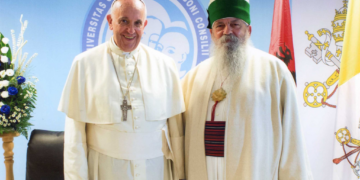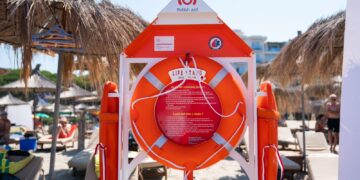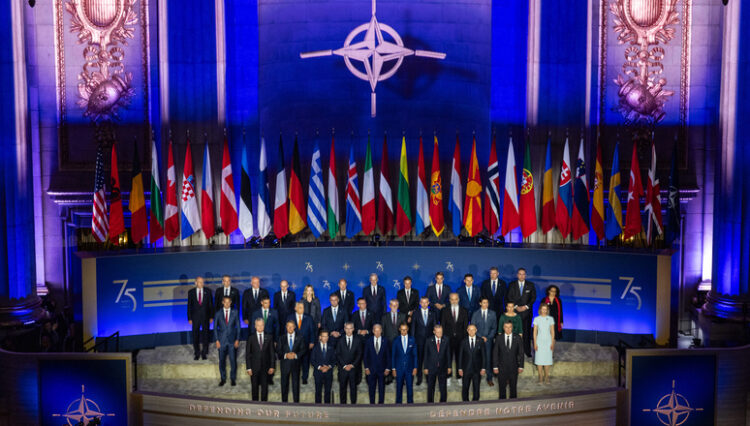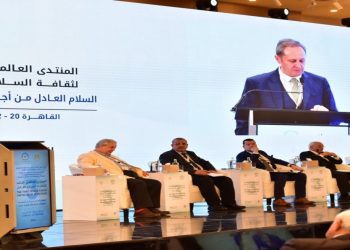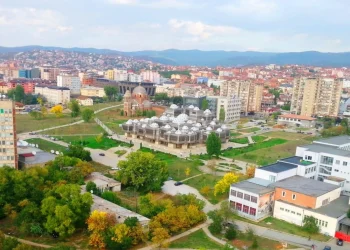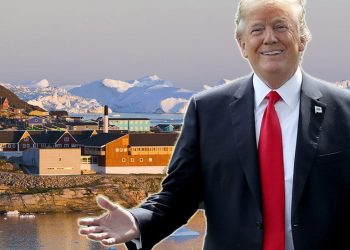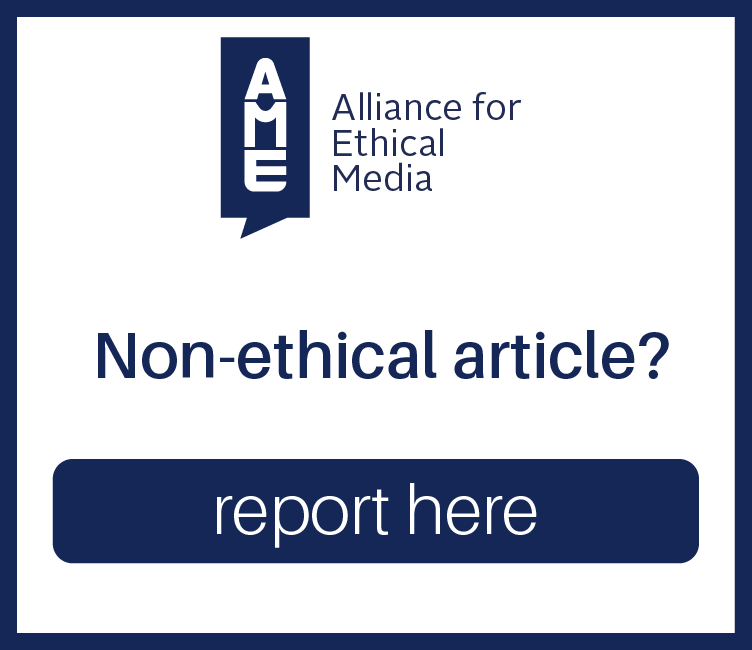By Florent Marciacq *
NATO gathered in Washington on July 9-11th to celebrate its 75th anniversary. It was an opportunity to highlight the Alliance’s decisive role in the past, in particular in the Western Balkans, and to establish a strategic vision for its future. The enduring war waged by the Russian Federation in Ukraine, heightened geopolitical competition and transnational attacks on democracy prompted the Alliance to signal unity and strategic engagement.
The summit, however, only met these expectations to a limited extent. Surely, it was about Ukraine and President Biden. NATO leaders praised Biden’s leadership and the strides NATO has made under his administration in mobilising support for Ukraine. NATO played an important role in uniting the allies against Russia’s 2022 invasion; it enlarged towards Finland and Sweden, and now more than the two-thirds of its members meet their two per cent defence spending commitment. From this perspective, the NATO Summit met its expectations.
Notwithstanding this success, the summit carried somewhat of a sombre tone, too. The ongoing US election campaign and debates surrounding President Biden’s candidacy affected the atmosphere. Allies navigated carefully, trying to make the summit successful while avoiding the looming issue of potential changes in US leadership, which could undermine the progress achieved at the summit. Uncertainties in US elections, primarily, but also concerns over election results in Europe, drew leaders’ attention away from longer-term reflections on the future of the Alliance.
While the summit might have met the immediate goal of rallying support for Ukraine despite significant divisions among allies, it fell short in delivering a comprehensive long-term strategy. The discussions addressed Ukraine’s security challenges in Europe, but fell short of including the Western Balkans in the strategic picture, with leaders seemingly content with maintaining the current, albeit fragile, status quo.
The Nexus between Security and Democracy
More than a military one, NATO is a political alliance with the potential to recalibrate and strengthen democratic values. As NATO allies convened in Washington during the 75th anniversary, NATO leaders failed to use this opportunity to recalibrate the Alliance’s readiness with regard to the changing security landscape and the ever-present security challenges.
According to expectations, the Washington Summit was supposed to be the place to strategise and capitalise on efforts to strengthen democracy, especially given the fact that the current US administration seeks to frame the war in Ukraine as the battle of democracy against autocracy. While the member states with autocratic tendencies within NATO, such as Hungary and Turkey, might have limited this ambition, the summit should have been an opportunity to reinforce a democratic agenda within the alliance, which, despite looking cohesive, does not seem to be fully aligned when it comes to its future.
An equally important task was to recognise NATO’s agency in supporting regional stability and democratisation, particularly in the Western Balkans. It was expected that this summit would deliver clear and concrete decisions to mark the 75th anniversary, as it was held in Washington, D.C., a fitting location to reinforce transatlantic strategic efforts in the region. As the world becomes more volatile and unpredictable, with conflict hotspots emerging, the summit should not solely focus on short-term security goals as in the past decade in the Western Balkans. It should also emphasise the importance of equally maintaining and promoting democratic values.
However, in the Summit Declaration, the Allies remained ambiguous about the Western Balkans, focusing on short-term stability—an approach that has proven problematic in the last decade. This Summit presented an ideal opportunity to foster democratic unity among allies in the US and the EU while remaining vigilant against Russian attempts to advance its authoritarian agenda in Ukraine and the Western Balkans.
NATO’s Ukraine Imperative
While the Russian full-scale invasion of Ukraine has served as a push to reinvent NATO, the summit put the Alliance’s strategic vision to the test, as well as its ability to maintain cohesion among allies. The Russian strategy to prolong the war in Ukraine continues to exhaust the West’s resources to maintain constant support for Ukraine. In a bid to bolster the support, the Allies have guaranteed its continuation but addressed the issue of Ukraine’s NATO membership in an ambiguous manner.
While the Allies are walking on thin ice trying to ensure continuous assistance to Ukraine, the idea of the country’s NATO membership seems to have taken the back seat. The debate about NATO membership for Ukraine has been elusive, with fault lines emerging among the allies. While France and the Baltic states are more prone to pursue this agenda, Germany and the US have taken a very cautious stance.
The Washington summit should have sought to advance this agenda with more determination, before election results in the US and in Europe put at risk the Alliance’s engagement vis-à-vis Ukraine. Consensus on this matter will not come easier as time goes by, so Washington was a crucial window to signal commitment in the most robust way. As the accession process can last for decades, the Allies seem to lack a plan B in case there is a change in the US administration, one that would deprive Ukraine of one of its key supporters within the Alliance.
Addressing the ‘Old’ Security Challenges of the Western Balkans
While Ukraine, understandably, received most of the attention, the other security soft spot in Europe that should have been addressed is the Western Balkans. By and large, the region is a NATO success story, with NATO expansion efforts effectively closing the Adriatic and Ionian Sea corridors from Russian influence due to Croatia, Montenegro, and Albania’s membership in the Alliance. This success was followed by North Macedonia’s membership in 2020. However, despite this success in NATO’s expansion, the security landscape remains fragile and still heavily dependent on NATO, and the threat of destabilisation looms.
The secessionist rhetoric in Bosnia and Herzegovina keeps the region on edge, with Russian-backed Milorad Dodik of the Republika Srpska continuously threatening secession. In 2024, the EU nearly doubled the size of the European Union Force (EUFOR) to 1,100 troops due to concerns that instability from the Ukraine conflict could have a spillover effect in the Western Balkans. Meanwhile, Russia aims to infuse fear and maintain Bosnia and Herzegovina in a constant state of insecurity; this strategy also seeks to stagnate Bosnia and Herzegovina’s NATO accession and keep it away from Euro-Atlantic integration.
Similarly, the war in Ukraine put the NATO mission in Kosovo (KFOR) under pressure. The instability pocket in the northern part of Kosovo, which is effectively maintained by Serbia and backed by Russia, has deteriorated the security situation. In September 2024, there was a concerning escalation of violence in northern Kosovo when a heavily armed group of Serb assailants launched an attack on Kosovo police at a monastery in Banjska (northern Kosovo), putting pressure on KFOR as the security guarantor in Kosovo to react. This attack was followed by a significant buildup of Serbian military forces along the border with Kosovo, prompting a reaction from the White House to call for the withdrawal of these troops. In response to rising tensions, NATO deployed an additional 1,000 troops in Kosovo to maintain stability on the ground and respond to security risks posed by Serbia, which maintains strong military cooperation with Russia and China.
Unlike the situation in Bosnia and Herzegovina, where the challenges to NATO membership are mostly internally driven, NATO membership for Kosovo remains a non-starter due to the four member states (Slovakia, Romania, Spain, and Romania) blocking its prospects. This is a blatant case in which a lack of cohesion among allies contributes to the success of the Russian agenda in Europe. The Washington Summit could have been a unique opportunity to soften the approach toward Kosovo in response to the latter’s request for enhanced cooperation with NATO.
It could also have been the occasion to toughen the stance of the Alliance vis-à-vis Belgrade’s authoritarian regime, especially after the rigged elections of last year. Serbia’s relations with Russia have not been challenged by the war, and its destabilising diplomacy based on pursuing the “Serbian World” in the region stands at odds with the interests of the Alliance.
While the Washington Summit addressed security challenges in Ukraine, a strategy for addressing the instability in the Western Balkans is also critically needed. The NATO military success in the Western Balkans and post-2022 momentum cannot be fully realised without rallying the Allies around the flag of democracy. After the Washington Summit, the Alliance will need to be a place where democratic partners can strategise and coordinate responses on multiple fronts in their fight against autocracies. Efforts should be intensified to counter the defeatist attitude among the Allies, both on the political and military sides. This might be the last window of opportunity to recalibrate and strengthen the transatlantic partnership in advancing the democratic agenda.
[1]The “Serbian World” is an irredentist, nationalist political ideology that mirrors “Russian World” imperialism. It seeks to rally all Serbs living in the Western Balkans around the idea of Great Serbia.


